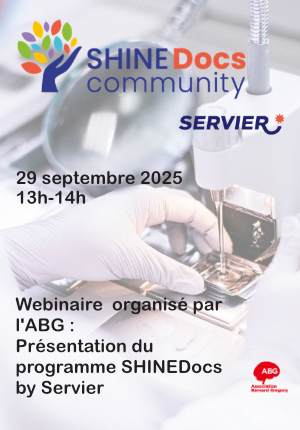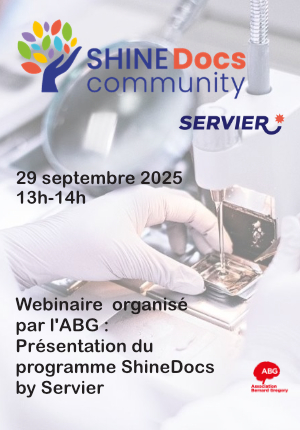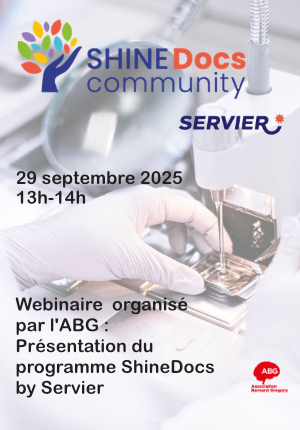Biointeractions at the nanointerface
| ABG-131615 | Sujet de Thèse | |
| 01/05/2025 | Financement public/privé |

- Biotechnologie
- Biotechnologie
- Matériaux
Description du sujet
Extracellular vesicles (EVs) are membrane-bound particles secreted by cells into the extracellular space. They range in size from tens to hundreds of nanometers and include exosomes, microvesicles, and apoptotic bodies, which differ in size and biogenesis pathways. Despite their small size, EVs are dynamic mediators of intercellular communication, transferring proteins, lipids, and nucleic acids (e.g., mRNA, microRNA) among cells. Their molecular cargo is highly context-dependent, reflecting the physiological or pathological state of the cell of origin. Once internalized by recipient cells, EV contents can modulate gene expression, alter signaling pathways, and influence cell behavior, making EVs critical regulators of tissue homeostasis. In healthy systems, EVs mediate processes such as immune modulation, angiogenesis, and tissue repair. However, in pathological conditions, they can facilitate disease progression. For instance, cancer-derived EVs can promote tumor growth and metastasis by modulating the tumor microenvironment and suppressing immune responses. Thus, EVs offer valuable insights into disease mechanisms and serve as promising biomarkers. Furthermore, harnessing EVs as delivery vehicles for therapeutic agents holds significant potential for targeted, minimally invasive interventions in various disease contexts.
The “protein corona” of EVs refers to the layer of proteins that adsorb onto their surface upon contact with biological fluids, such as blood serum. Growing evidence indicates that this corona composition profoundly influences EV behavior, including circulation time, tissue targeting, and cellular uptake. Studies suggest that this protein layer can either mask or modify the native surface markers of EVs, altering their recognition by recipient cells. Furthermore, the corona affects EV stability by protecting membranes from enzymatic degradation, while also modulating their immunogenicity. Despite growing insight, challenges remain in fully characterizing protein coronas due to their dynamic nature and variability among individuals. Advances in proteomics and high-throughput analysis are helping to clarify how different corona profiles influence EV function. A deeper understanding of this phenomenon is crucial for optimizing EV-based therapeutics and diagnostics, offering the potential to engineer or customize EV coronas for improved targeting, safety, and efficacy.
This project aims to elucidate how the protein corona influences the biodistribution and tissue penetration of EVs in vivo. To achieve this, a combination of in vitro and in vivo methodologies will be employed, enabling a comprehensive assessment of EV diffusion across different biological barriers. On the in vitro front, the dynamics of the PC will be monitored on EVs diffusing through dense tissues such as tumors using advanced imaging techniques such as confocal microscopy, nanocytometry and differential dynamic microscopy.1 These biomimetic platforms will allow precise control over experimental conditions, facilitating high-resolution studies of EV transport, uptake, and interactions with resident cells. In parallel, in vivo experiments will be performed using zebrafish, whose transparency provides an unparalleled opportunity to track EV distribution at single-cell resolution in real time. This will offer insights into how the protein corona governs EV behavior under physiologically relevant conditions. Furthermore, the colloidal dynamics of EVs, as well as the formation and composition of their protein corona, will be monitored in situ using advanced imaging modalities.2 Techniques such as high-speed confocal microscopy and dynamic differential microscopy will enable quantitative analysis of particle motion, aggregation, and cell internalization, ultimately shedding light on the molecular mechanisms that shape EV functionality in complex biological environments.3 The knowledge generated during this project will advance our comprehension of EVs interactions with living matter and will help design novel drug delivery systems with improved biodistribution and pharmacokinetic properties.
The PhD student will join Pr Xavier Banquy’s laboratory, at the Faculty of Pharmacy, whose expertise spans from polymer synthesis and production of EVs, drug delivery, microfabrication and advanced imaging. The multidisciplinary nature of the project will require interaction with multiple research teams within the group.
References
1. Latreille et al. Spontaneous shrinking of soft nanoparticles boosts their diffusion in confined media Nature Comm. 10: 4294 (2019)
2. Latreille et al. In situ characterization of the protein corona of nanoparticles in vitro and in vivo Advanced Materials 2203354 (2022)
3. Rabanel et al. Deep tissue penetration of bottlebrush polymers via cell capture evasion and fast Diffusion ACS Nano 16, 21583−21599 (2022)
Prise de fonction :
Nature du financement
Précisions sur le financement
Présentation établissement et labo d'accueil
University of Montreal’s main campus is situated at the heart of Montreal city, the most vibrant city for pursuing graduate studies in North America. Recent surveys have placed Montreal as the best place to study in the world and University of Montreal as one of the best universities of the world. Pr Banquy is affiliated with the Faculty of Pharmacy, Department of Chemistry and the Institute of Biomedical engineering. His laboratory is located in this unique environment and offers world class research facilities to students willing to pursue their career in bioengineering or pharmaceutical science. This position comes with a competitive scholarship from the STAIRS training program in biomanufacturing funded by the Canada Biomanufacturing Research Fund for the whole duration of the PhD.
Site web : http://xbanquy.wix.com/labo-banquy-lab
Site web :
Intitulé du doctorat
Pays d'obtention du doctorat
Etablissement délivrant le doctorat
Profil du candidat
The applicant must be highly motivated by research and engineering.
Desired qualities are:
- Experience in nanotechnologies/biotechnologies/nanomaterials characterization is recommended
- High motivation to carry out a multidisciplinary research project at the interface of bioengineering and physics
- Strong appetite for experimentation
- Proficiency in spoken and written English
- Team spirit
- Scientific curiosity
The candidate must have academic training in one of the following fields: nanomedicine, colloidal physics, biotechnology or biomedical engineering. Experience in microsystems design or microfabrication is welcome but not mandatory.
Vous avez déjà un compte ?
Nouvel utilisateur ?
Vous souhaitez recevoir nos infolettres ?
Découvrez nos adhérents
 MabDesign
MabDesign  ONERA - The French Aerospace Lab
ONERA - The French Aerospace Lab  Institut Sup'biotech de Paris
Institut Sup'biotech de Paris  ADEME
ADEME  Aérocentre, Pôle d'excellence régional
Aérocentre, Pôle d'excellence régional  Ifremer
Ifremer  Généthon
Généthon  Tecknowmetrix
Tecknowmetrix  ASNR - Autorité de sûreté nucléaire et de radioprotection - Siège
ASNR - Autorité de sûreté nucléaire et de radioprotection - Siège  CASDEN
CASDEN  Nokia Bell Labs France
Nokia Bell Labs France  ANRT
ANRT  TotalEnergies
TotalEnergies  Groupe AFNOR - Association française de normalisation
Groupe AFNOR - Association française de normalisation  PhDOOC
PhDOOC  Laboratoire National de Métrologie et d'Essais - LNE
Laboratoire National de Métrologie et d'Essais - LNE  MabDesign
MabDesign  SUEZ
SUEZ  CESI
CESI





